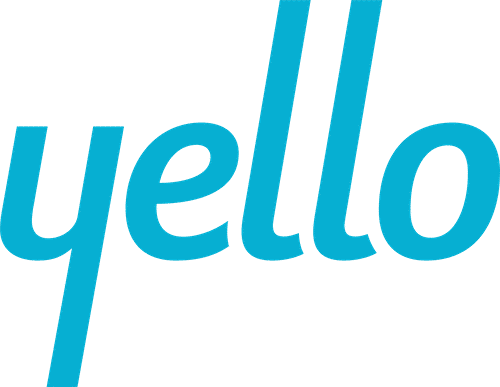The use of HR technology is the norm in today’s recruiting landscape. In fact, 73% of companies currently use talent acquisition software to streamline recruitment processes, reduce time-to-hire and cost-per-hire, improve candidate experience and more.
But even though its value is well-known, many human resources teams still struggle to communicate with leadership about why recruitment technology is a necessary component of any successful business strategy, and achieving buy-in to invest in new software can be a challenge.
If you’re looking to make an investment in new HR technology this year, here’s how to make your case with the C-suite:
Step 1: Identify the hiring problems you’d like to solve
As a recruiter, a brand new talent acquisition platform might draw you in with amazing product features, testimonials from other recruiters or big promises to improve your HR team’s day-to-day workflow. But don’t let new software solutions be a shiny object — vague product benefits aren’t going to cut it when you speak with leadership.
Before investing in new technologies, the C-suite will want to know how the platform fits in with the overall company strategy, what kind of return on investment to expect, and how it will help you reach your recruiting goals for the year.
Before you hit send on an email to the leadership team, it’s important to clearly articulate the problems you’re hoping to solve and the strategies you’d like to improve. As you prepare to build a business case for new recruitment technology, outline answers to these questions:
Questions to answer when looking for new recruitment technology:
- What are the biggest problems our recruiting team faces today?
- How will a new technology solution alleviate these problems?
- How will new recruitment technology benefit the organization as a whole? Will it address company-wide initiatives for the year?
- How much does the new platform cost?
- How will we measure return on investment, and how much return can we expect within the first six months/one year/beyond?
Step 2: Engage the leadership team
You’ve conducted hours of talent acquisition software research, sat through countless sales demos, made multiple vendor comparisons and finally selected the best option for your company. You’re ready to sign on the dotted line, but first you need executive approval.
Now is the time for initial outreach to the leadership team. When starting the conversation, the goal is to give a high-level overview of key recruiting pain points and how new technology will solve them — without overwhelming leadership with data and minutiae. (Don’t worry, that will come later.)
To kick off the C-suite approval process, send a brief email with a few important details:
- Reiterate your team’s biggest talent acquisition goals for the year
- Name the technology you’ve identified to help meet these goals
- Outline how the technology will help you solve 2-3 major pain points
- Ask to set up a time to discuss further in person
Step 3: Present your business case
Hopefully by now, you’ve heard back from the executive team, and they’re curious to learn more about the new recruitment technology you’ve identified. They want to meet to discuss why you need talent acquisition software, how it will benefit the company and its impact on the bottom line.
It’s time to present your full business case. Use the following outline to prepare your presentation, further your request and get the buy-in you need.
Recruitment technology business case outline
1. Provide insight into current process
Your head of talent acquisition may not be familiar with your daily responsibilities and all that goes into the end result: an accepted offer. Outline what your current process looks like and detail what talent acquisition software can do to improve that process.
EXAMPLE SCENARIO
Your schedule is filled with career fairs, but you can barely find time to review the resumes you receive at these events.
SOLUTION
Use recruitment events software to collect candidate data digitally, eliminating paper resumes and empowering you to review and evaluate candidate information on the spot with a phone or tablet. Go back later to filter profiles and identify candidates that best fit open roles.
2. Tie your proposal to an organizational goal
Your leadership team’s job is to protect your company’s strategic direction and long-term vision. Tie all talent acquisition software benefits to a strategic goal to demonstrate how your proposed investment will deliver value.
EXAMPLE SCENARIO
One of your company goals for the year is to decrease overhead costs by 10%.
SOLUTION
Recruitment software improves operational efficiency, reducing time-to-hire and cost-per-hire. Research shows that a shorter time-to-hire helps decrease recruiting costs, contributing to your overall company goal to cut back on overhead.
3. Incorporate industry trends
Leadership is focused on ensuring the future success of your organization, and needs to understand how new systems will be an investment in your company’s long-term vision. Be able to speak to industry trends, and how they relate to your specific business case.
EXAMPLE
LinkedIn recently identified people analytics as one of four global talent trends to watch in 2020. Most notably, their research shows that 55% of companies report needing help with basic people analytics. That’s where recruitment operations software steps in — to streamline processes, offer greater access to data, and increase efficiency across talent acquisition teams.
4. Use metrics to articulate value
Talent acquisition software can change leadership’s perception of your department. Automating repetitive, administrative hiring tasks frees up your team’s time to become a true business partner to the organization as a whole. Use data to show how your team can make a bigger impact on overall company strategies.
EXAMPLE
On average, recruiters are spending ⅔ of their overall hiring time on the interview process, and 60% of recruiters say that they regularly lose candidates before they’re able to schedule an interview. Interview scheduling can reduce one of the most time-consuming processes by up to 90%, freeing up recruiters’ time for more important tasks, like building candidate relationships and improving employer branding.
5. Identify reasons for the specific vendor you chose
Your leadership team needs to know the benefits of talent acquisition software in general, but they also need to understand the reasons why you’re recommending a specific company. Highlight why the software you selected is the best choice.
EXAMPLE
You’re recommending Yello’s recruitment CRM software because it will help your team:
- Reduce time-to-hire by building proactive talent pipelines and streamlining engagement
- Build better candidate relationships and gain insight into the job application journey to plan for future hiring needs
- Increase productivity on a centralized platform that simplifies collaboration and maximizes pipeline efficiency
Step 4: Outline next steps
At the end of your presentation to the executive team, ensure all parties walk away with an understanding of next steps.
Maybe you need to follow up with more data to support your case, or answers to questions that arose during your meeting. Or perhaps you decide to move forward with a pilot program to test results. If you receive approval to move forward on the spot (lucky you!), next steps might be to set up an onboarding timeline for the new software solution.
No matter what the next steps are, make sure they’re communicated effectively to each individual involved in the decision-making process, including your software vendor contact person.
Step 5: Measure success
Congratulations, your leadership team is on board and you’re ready to start implementing your new talent acquisition software! One of the most important steps is to measure your progress and results, and be prepared to report to key stakeholders.
Don’t forget — the leadership team has chosen to invest in your platform of choice, but if they don’t see the long-term value, they may be inclined to move in a different direction. Continue to visibly prove your talent acquisition software’s ROI to ensure the company continues to invest in it.
By focusing on impact to company strategy, employing a metrics-first mindset, and incorporating industry trends, building a strong business case for new recruiting technology is just a few steps away.


